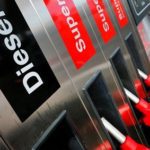Rethink needed on petrol levy
About half the petrol price is constituted by local additions of one sort or another
SA is facing something of a petrol-price crisis. The pump price of petrol has so many inputs, which often pull in different directions, so it is often hard to keep track of the overall direction. The significant levers are of course the rand-dollar exchange rate, the price of oil itself and the local excise tax. In March, there was actually some price relief, mainly because of a strengthening rand.
In April, all of these levers pulled in the wrong direction for South African motorists. For example, 95 octane petrol at the coast jumped 62c/l, an increase of around 3.7% in a single month. The price of that grade is now R14.38/l, which is the highest it has ever been. And because they move in roughly mechanical lock-step, all other petrol prices are now at record levels, higher than they were in 2014 when the oil price was in three digits.
The compounding problem in April was that special budget increases kicked in. It was announced during the budget speech in Parliament in February that the fuel levy fund would be increased by 22c/l and the Road Accident Fund levy by 30c/l. If that weren’t enough, the National Energy Regulator of SA increased the pipeline transport tariff.
If these were the only issues, then at least there would be some comfort in the fact that it was a one off. But the international situation is now looking grim, at least from the point of view of the consumer.
Once again, there are many related issues pushing up the oil price. Oil prices climbed above $80 a barrel for the first time in almost four years over the past week.
Renewed US sanctions again Iran and Venezuela’s continuing economic disaster, compounded now by a poorly supported election, have both increased international tension.
There is really no political event more likely to ramp up the oil price than political instability in the Middle East.
But there is a bigger problem: demand. Supply problems still exist not only in Iran and Venezuela but also in Russia, and occasional outages in Nigeria and Libya. These would all be in the realm of the normal level of bedlam that is a constant part of the oil business.
However, the shift to increased demand is new, and that is driven by a stronger, and importantly synchronised, global recovery than had been expected. The idea of oil prices above $100/barrel was a subject of scorn not six months ago. It’s now looking like a strong possibility.
In SA, there is a kind of fiction that when it comes to the petrol price the country is tossed around on currents it cannot control. But in fact about half the petrol price is constituted by local additions of one sort or another.
The biggest problem for the government is that revenue collection has disappointed over the past years, as has economic growth in general. So when the oil price came off its high in 2014, the then finance minister Nhlanhla Nene plugged a hole in the budget in 2015 with an 80.5c increase in the petrol levy, which would cost motorists about R17bn a year.
As irony would have it, Nene — now back in his old job — will have to try to find a way to deal with the fallout of his 2015 decision. Quick fixes like increasing the petrol tax will not be so easy this time. SA’s petrol price is now at European levels, which means they are among the highest in the world. In the US, for example, motorists now pay about R8.80/l.
The other big factor is of course the rand, which was generally strengthening happily with the new political dispensation. But from this point onwards, the good news is probably in the price.
One of the problems with SA’s high petrol price is that it lands disproportionately on the working poor because it affects transport costs. It also decreases the competitiveness of the economy as a whole. Nene may have to think about taking out the “quick-fix” plug that he put in place in different circumstances.








